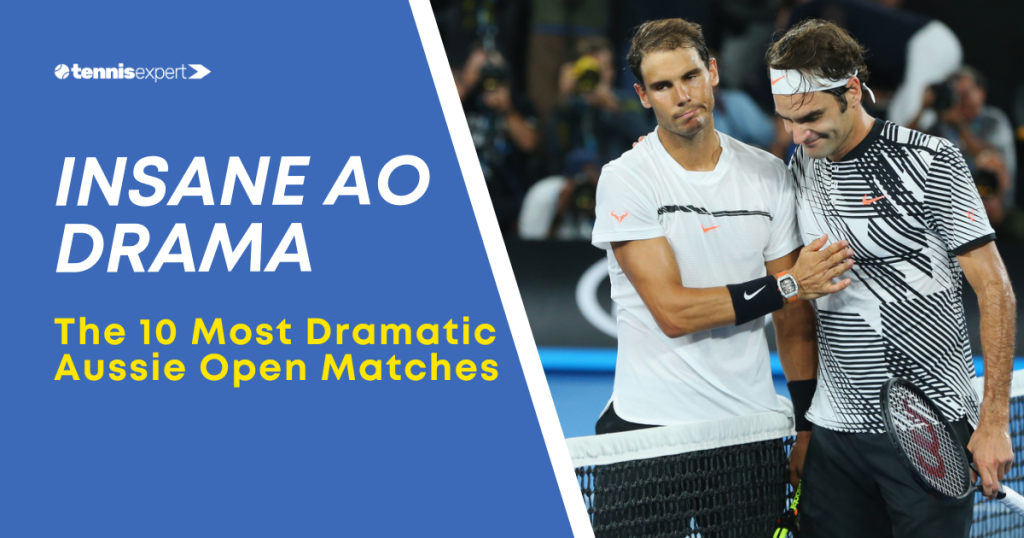Winning the Australian Open, or any Grand Slam event, is a crowning achievement in tennis, reflective not only of physical prowess but also of immense psychological strength. The Melbourne Park atmosphere, where the Australian Open has made history with record-breaking attendance, is a cauldron of pressure that tests the mettle of the world’s best players. As they navigate the intense Australian summer heat and the roar of millions of fans both on-site and watching from afar, their mental endurance is as crucial as their backhand.
The psychological aspect of tennis is often a game of inches, where maintaining focus during crucial points and managing emotions can make the difference between lifting the trophy and coming up short. The likes of Iga Świątek have shown that mastering the inner game can lead to rapid ascension in the sport. Even for seasoned champions, every match presents a new psychological battleground where confidence, resilience, and adaptability become key components of their arsenal.
Mental Resilience in Tennis
In the world of tennis, particularly at the high stakes of the Australian Open, a player’s mental fortitude is just as crucial as their backhand. Elite athletes commonly integrate mindfulness and mental training into their regimen to enhance performance. Let’s break down why this matters.
Mindfulness Techniques
- Players use visualization to prepare for matches, mentally rehearsing plays and points to stay ahead.
- Regular meditation supports their ability to remain calm and focused amidst intense competition.
Psychological Preparedness
Top performers like Novak Djokovic are known for their exceptional resilience. This psychological strength isn’t just innate; it’s honed through practice and perseverance. They train to handle pressure, bounce back from setbacks, and convert stress into a winning drive.
Resilience Against Challenges
- Adapting to an opponent’s strategy.
- Overcoming internal doubts and negative self-talk.
- Sustaining concentration over extended matches.

Grand Slam Stakes
During a Grand Slam, the mental aspect intensifies. Players must navigate the heightened emotional landscape, maintaining composure during pivotal moments that can define their careers.
Psychology in Practice
- Consistent mental resilience can tip the balance in a player’s favor.
- Athletes invest in mental conditioning to match their physical prowess.
In essence, tennis is as much about outplaying an opponent mentally as it is physically. Those who master their inner game often shine at events like the Australian Open, where every point can make history.
Tactical Preparation
Tactical preparation is crucial for success at the Australian Open, since it revolves around expert game plan development and meticulous analysis of opponents.
Game Plan Development
Players map out their strategic approach by developing a game plan that accentuates their strengths and targets their opponent’s weaknesses. They consider the court surface, weather conditions, and personal stamina. Here’s how they might frame their approach:
- Strengths: Focus on what works best, like a powerful serve or strong backhand.
- Weaknesses: Plan to minimize exposure of personal weak points during play.
- Surface Suitability: Devise tactics that leverage the hardcourt’s speed and bounce.
- Environmental Factors: Adjust strategies for potential extreme heat.
Analyzing Opponents
Analyzing opponents involves studying their recent matches and recognizing patterns that could be exploited. Players often create a list or even a table to distill their findings:
| Opponent | Strength | Weakness | Preferred Shots | Break Point Performance |
|---|---|---|---|---|
| Player A | Forehand | Backhand | Cross-court | Struggles under pressure |
| Player B | Serve | Endurance | Down-the-line | Excels at clutch moments |
They note habitual shot selections and how their opponents react in high-pressure situations to gain an edge during critical points in the match.
Physical Conditioning for the Australian Heat
In the fierce competition of the Australian Open, players must prepare not just technically, but also physically for the extreme heat they will face. Acclimation is a key strategy; spending time in similar conditions to those expected in Australia helps their bodies adapt to the heat more effectively.
Hydration is essential, with players increasing their fluid intake to compensate for the excessive sweat loss. They not only drink water but also consume electrolyte-replenished drinks to maintain a balance of important minerals.
They follow a structured conditioning program that includes:
- Cardiovascular training: to improve stamina and endurance in the heat.
- Strength exercises: focusing on muscles used most during intense matches.
- Flexibility routines: to prevent injuries that can be more likely when muscles are hot and fatigued.
Players also focus on heat acclimatization through controlled exposure. This might include:
- Practicing during the hottest part of the day.
- Incorporating heat chambers or saunas into training.
- Gradually increasing the intensity and duration of workouts in the heat.
Nutritionists and physical trainers are involved to ensure the athletes’ diets support their increased needs during hot conditions, with a focus on foods that are easy to digest and nutrient-rich.
Lastly, cooling strategies during play include using ice vests, chilled towels, and taking advantage of any shade during breaks. Cooling the body can help athletes maintain a lower core temperature, which is crucial for optimal performance and avoidance of heat-related illness.
Recovery and Injury Prevention
Athletes at the pinnacle of tennis, like those competing in the Australian Open, consider injury prevention and recovery as critical to their success as their forehand or serve. It’s the foundation that allows them to maintain peak performance throughout the grueling two-week competition.
Importance of Proper Rest
Rest is not just downtime; it’s when the magic of recovery happens. Players have to listen to their bodies to differentiate between typical soreness and the onset of a potential injury. It’s common to see a strict sleep regimen, with 7-9 hours of quality sleep per night being the norm, coupled with power naps during the day to enhance recovery. This deliberate rest is weaved into their schedules, with many opting for days with absolutely no tennis post-match to allow their bodies to recover.
Nutrition and Hydration Strategies
Staying hydrated and maintaining balanced nutrition are key to injury prevention, especially in the Australian heat. Players typically employ nutritionists who tailor their diet plans, emphasizing:
- Hydration: Drinking electrolyte-rich fluids before, during, and after matches to maintain electrolyte balance.
- Carbohydrates: Ensuring glycogen stores are replenished with a focus on complex carbs for sustained energy release.
- Protein: Integrating high-quality proteins post-match to repair and build muscle.
Through this methodical approach to rest, nutrition, and hydration, they build resilience against the physical demands of the sport and enhance their recovery, keeping them fit for the fierce competition ahead.

Historical Greats and Their Mindsets
In considering the Australian Open, one can’t help but reflect on the champions who’ve not only mastered the physical game but also the mental. Their victories underscore a blend of talent and tenacity, a recipe for triumph.
Legends of the Court
Margaret Molesworth and Esna Boyd were among the first to set the psychological bar at the Australian Open. Molesworth, the winner of the inaugural women’s singles title, embodied poise and focus in her games, illustrating that mental fortitude often tipped the scales in her favor. While Boyd faced repeated runner-up outcomes, her persistent return to the finals for the first five years showcased resilience and determination, qualities undeniably crucial in the psychology of winning.
Legends such as Daphne Akhurst continued this legacy, displaying both outstanding skill and a champion’s mindset, which played pivotal roles in solidifying their places in tennis history.

Psychological Warfare
The Australian Open isn’t just a display of physical prowess but also a battlefield of the mind. Great players excel in what could be called “psychological warfare,” managing stress, anticipation, and the burden of expectations with finesse.
- Pressure Management: The ability to play under immense pressure and maintain composure sets the stage for success.
- Expectation Handling: Carrying the weight of public and personal expectations without it hindering performance.
- Adversity Overcoming: Mental grit allows players to push through adversities, such as losing a set or dealing with unfavorable conditions.
Champions like Novak Dhokovic – with 10 titles to his name – demonstrate how a strategic mindset, along with a calm and confident approach to the game, contribute to repeated victories.
In the end, it’s often their mental game that differentiates the good players from the historical greats at the Australian Open.
Introducing The Tennis Expert, your insightful guide into the world of tennis. With a passion for the game that started in childhood, they have dedicated years to studying and understanding every nuance of tennis. Their keen eye for detail and deep knowledge of the sport's strategies, history, and evolving trends make them a reliable source for tennis enthusiasts. Whether breaking down a classic match or offering tips for players, The Tennis Expert combines a fan's love for the game with an analyst's eye.





